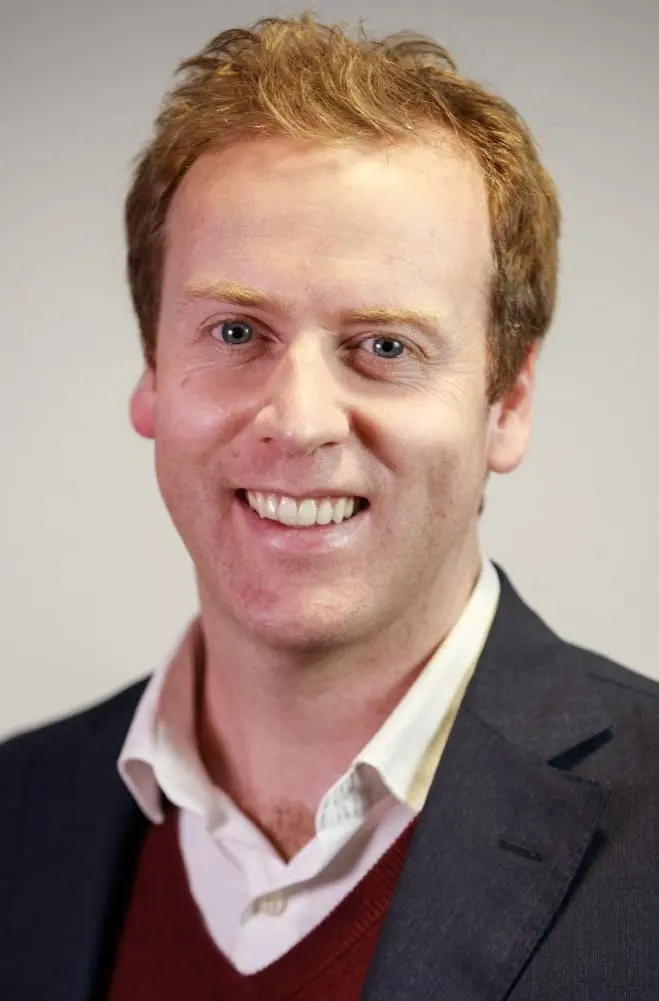Orthodontists and new technology: Techies or Luddites?
We are all aware of the rapid pace of change that our speciality has seen in recent years. The maelstrom of new brackets, wires, aligner systems, intra-oral scanners, 3D imaging, 3D printers and remote monitoring systems are just some of the newer systems that we have to grapple with.
Change and the advent of new technologies have some rubbing hands with glee, while others (like Kevin) often caution us to ‘sit it out while supportive evidence emerges. I’m sure we all have colleagues who are happy to jump on the bandwagon and ‘alpha-test’ new technologies. But, equally, we all know of others whose decision-making, practice and mechanics have changed little for decades. But what proportion of us fall into each category? And crucially, what factors make us adopt these newer technologies?

A team from North Carolina and Boston, USA did this study.
Understanding technology adoption by orthodontists: A quantitative study.
Laura Anne Jacox, Clare Bocklage, Teresa Edwards, Paul Mihas, Feng-Chang Lin, and Ching-Chang Kod
Am J Orthod Dentofacial Orthop 2022;161:364-74. DOI:https://doi.org/10.1016/j.ajodo.2018.08.018
What did they do?
They conducted an online survey as a follow-up to an earlier qualitative study to identify critical factors influencing the adoption of new technology among orthodontists in the United States. Their previous qualitative work explored factors including cost, performance, and ease of use. The survey included a decision tree based on technologies that respondents had either adopted or forgone. They, therefore, based the survey on their history of adopting various technologies. They e-mailed the survey to 4,600 AAO members.
Participants and Interventions:
Participants included AAO members based either in private or corporate clinics with current residents, newer graduates (less than 2 years), retired clinicians, full-time academics, and those based outside the U.S. excluded. They obtained responses from 343 clinicians (7.4%). They categorized the respondents as early, middle, or late adopters based on screening questions.
What did they find?
The results were many and somewhat disparate. I have tried to summarise the more pertinent findings. These were:
- Technology adoption was not related to orthodontists’ age, gender, ethnicity, time in practice, residency program, or practice setting (e.g. rural or suburban).
- Most orthodontists (72%) first hear about new technologies from peers.
- Company representatives were the second most common source (42%) of information, with the effect of conferences and continuing education also prominent (41%). All other sources were cited by less than one-third of respondents.
- Around one-quarter of orthodontists learned about technologies from journals, with social media reaching almost as many orthodontists as published literature.
- Earlier adopters began more patients per year than other groups and charged higher fees. They were more likely to use self-ligating brackets, CAD-CAM wires and brackets, CBCT and clear aligners. They also seem to focus mainly on patient preference.
In terms of technology adoption, the cost, ease of integration, and impact on efficiency seemed to outweigh any possible effect on outcomes. Patient preferences also motivated the adoption of aesthetic treatment modalities and intraoral scanning.
The respondents believed that intraoral scanners and 3D printers improved efficiency and workflow while also being preferred by patients. Both technologies provided a marketing advantage, while the intraoral scanner helped by reducing the need for plaster models. CBCT increased operating costs for most doctors, whereas intraoral scanning did not.
They also felt that CAD-CAM brackets offered a marketing advantage. Laboratory-produced clear aligners were thought to reduce office visits, provide an aesthetic option and assist with marketing. In-house aligners led to lower costs while satisfying esthetic demands, although, unlike laboratory-produced aligners, a reduction in in-office visits was not thought to arise. Orthodontists did not feel that aligners influenced either outcomes or treatment time.
What did I think?
I think that this was a fascinating study. From a methodological perspective, I liked that the fact that the authors built the study from first principles, having undertaken and published an earlier qualitative element. Fundamentally, however, this is a piece of research that makes me think about my practice- what I do and don’t embrace, whether I procrastinate too much and whether I should be more or less adventurous. It also makes me reflect on the adjuncts that I have bought into to a greater or lesser extent over the years (the boxes of unused micro-osteoperforation devices in my surgery being a constant reminder). Equally, it makes me think about the techniques I have embraced less than I could and perhaps should.
The finding that early adopters value digital workflows and CAD-CAM systems and seem to be more proactive in developing in-house aligners is interesting. But, equally, the fact that technology may be valued more as a means of broadening patient choice, changing workflows, and offering marketing appeal is telling. These advantages are considered more pivotal than any possible effect on treatment outcome.
What can we conclude?
Clearly, further research evaluating the accuracy of orthodontists’ beliefs on the effect of technological advances would be helpful. This type of research is undoubtedly happening. Nevertheless, based on some of the findings from the present study, I can’t help feeling that our inherent tendencies around technology might mean that human nature will trump these findings. And the early-adopting techies will continue to embrace, while the Luddites will procrastinate and ignore.
Padhraig Fleming. Professor of Orthodontics

Professor of Orthodontics, Trinity College Dublin, The University of Dublin, Ireland
To borrow from Shakespeare, “All that glitters is not gold”. All that is new is not better. That is the dilemma in early or late adoption or “Techie or Luddite”.
There are three possible. The first is that the early adopter will be the first to integrate those technologies that advance our profession. They will be the first to have their patients benefit from something new. Advantage here is to the early adopter.
The second possibility is that, they will also adopt many things that are of no benefit to them or their patients. Fortunately, usually, even when these are of no benefit, they are mostly innocuous.
Huge sums have been spent on magic braces, magic vibrational appliances, and many other items that time and research has later shown to be of no benefit to patients. However, other than financial cost and some additional time in treatment, these have likely resulted in little physical harm to patients. Advantage here is to the delayed adopter, “Luddite”.
The third possibility, and biggest danger is in the potential to adopt technologies or techniques that actually are harmful to patients. We have seen this lately. An example would be orthodontists needlessly exposing patients to CBCT for diagnosis of conditions that CBCT is now known not to be diagnostic for, such as sleep apnea.
IMO, this last category should be avoidable through the use of our good sense alone. If something has the potential to harm patient’s, we should be able to figure this possibility out before research proves it so. An example would be waiting until CBCT is known to be appropriate for certain diagnosis before using them in that manner. Advantage here is to those early or late adopters who think things through before turning this technology loose upon their patients.
So the difference in advantage would seem to lie in determining whether something new is in either category one, a true advantage, or category two, of no real benefit.
While that may seem a critical distinction, I am struggling to think of a recent new technologically, later proven to be helpful at some level, where it was a true disadvantage to our patients that the technology be adopted a year, or two, or three after. In hindsight, was it really a non marketing advantage to have that 1st scanner that took individual photos, took 12 minutes, and is collecting dust somewhere now?
Cephalometric analysis helped bring more science into our art and science specialty. IMO, there was a huge advantage to the patients of the early adopters with cephalometric analysis. However, I am struggling for another example. Even Andrews straightwire appliance likely doesn’t qualify. I believe that most straight wire practitioners would agree, standard edgewise practitioners are more than capable of the same high quality care.
So, if I am correct, it would seem that there is little advantage or disadvantage to the patient of being with an early or late adopter. At least if the early adopters have the good sense to avoid harmful technologies, all their patients risk is extra cost and extra treatment.
So the articles conclusion would seem appropriate, “In terms of technology adoption, the cost, ease of integration, and impact on efficiency seemed to outweigh any possible effect on outcomes.”
We are choosing new technologies for reasons other than treatment quality. That is sad in a way. It also should be a statement to us all that those of us who chose to adopt early are not providing better care than those of us who wait a year, or two, or three. Quality, would seem to derive from other factors.
A more accurate response might have been from a random sample rather than just those who chose to respond. There is a certain mind set in those who answer surveys compared to those who don’t and that prejudice can taint there answers.
An excellent paper. In my day innovations such as Andrews straightwire technique and vacuum formed retainers were a godsend in terms of efficiency, patient comfort and ease of use compared to what preceeded them eg Edgewise, Begg and clunky acrylic/metal retainers! Intra oral scanners? Way after my time but had they been available, definitely a yes. CBCT…a definite No!
The real science in Orthodontics is the Optimal Sample. Maybe the only science.
Biggest issues with these studies is they are looking in the rear view mirror. The iPhone and GPUs were not generated by “needs’ but by forward looking people who invented something totally new. At the moment, we are using new technologies to improve the old. Our outcomes are not really better than conventional techniques reflecting the poor quality of our approach.. We are in need of forward looking people who will look at the data mining and deep learning world with a fresh set of eyes. Time to interview a few computer and biomechanical scientists and stop relying on companies for the advancement of our profession.